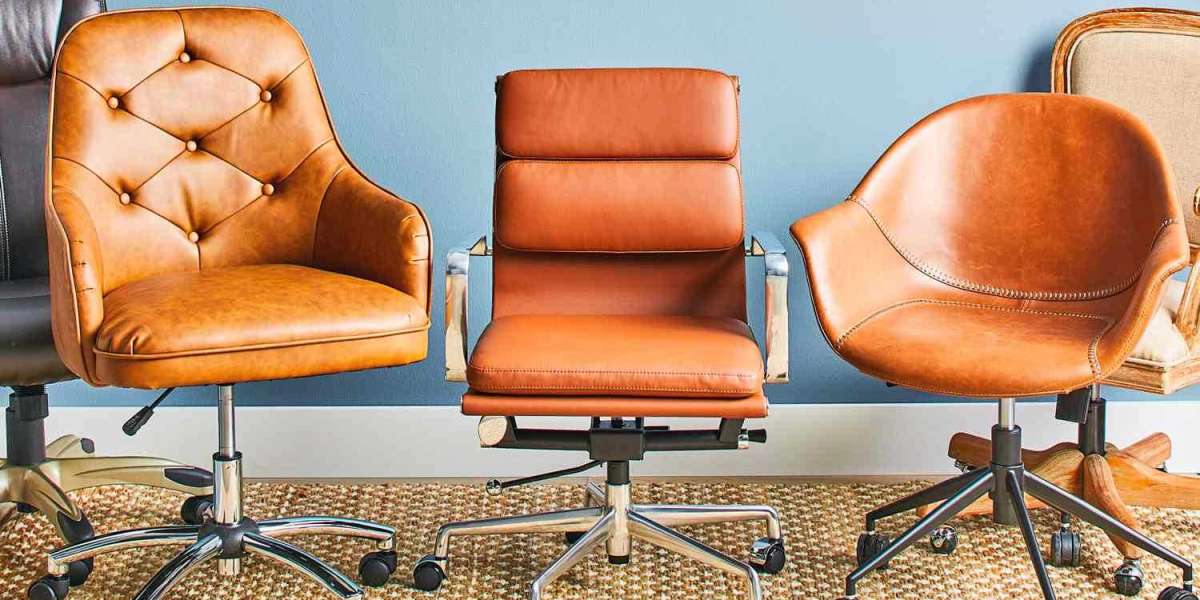Your office chair plays a significant role in your back health, especially if you spend long hours sitting at your desk. An ergonomically designed chair that supports proper posture can prevent or alleviate back pain, while a poorly designed or improperly adjusted chair can lead to discomfort, strain, and even chronic back issues. Here’s how your office chair can affect your back health:
1. Lack of Lumbar Support
- Effect: The lower part of your spine (lumbar region) naturally curves inward. A chair without proper lumbar support allows this curve to flatten, leading to slouching and increased pressure on the spinal discs. Over time, this can cause lower back pain and strain on the muscles and ligaments that support the spine.
- Solution: Choose a chair with adjustable lumbar support or add a cushion to support your lower back. This helps maintain the natural curve of your spine, reducing strain.
2. Improper Seat Height
- Effect: If your chair is too high or too low, it can lead to poor posture. A chair that is too high may cause you to dangle your feet, leading to pressure on the back of your thighs and increasing strain on your lower back. A chair that is too low forces you to hunch forward, which can lead to slouching and strain on your spine.
- Solution: Adjust your seat height so that your feet rest flat on the floor, your knees are at a 90-degree angle, and your thighs are parallel to the ground. This position promotes proper posture and reduces pressure on your lower back.
3. Inadequate Backrest Support
- Effect: Chairs with flat or non-adjustable backrests can lead to slouching or sitting forward, which strains the muscles in your upper and lower back. This can cause tension, discomfort, and long-term back issues like disc herniation.
- Solution: Opt for a chair with an adjustable backrest that reclines slightly, allowing your spine to rest in a natural position. A reclining feature can reduce the pressure on your spinal discs by distributing your body weight more evenly.
4. Poor Seat Depth and Width
- Effect: A seat that is too deep may cause you to sit too far back, preventing proper use of the backrest and leading to slouching. A seat that is too shallow can limit support and cause you to perch on the edge, putting pressure on your lower back.
- Solution: Ensure the chair has an appropriate seat depth that allows about 2-4 inches between the back of your knees and the seat edge. This promotes good circulation and allows you to sit back fully, using the backrest for support.
5. Inappropriate Armrest Position
- Effect: Armrests that are too high or too low can cause you to hunch your shoulders or lean forward, leading to strain on your neck, shoulders, and upper back. Poor armrest positioning also affects the alignment of your spine.
- Solution: Adjust your armrests so that your arms rest comfortably at a 90-degree angle with your shoulders relaxed. This supports the upper body and relieves tension in the back and shoulders.
6. Hard or Uncomfortable Seat Cushion
- Effect: Sitting on a hard or poorly cushioned chair can put pressure on your tailbone and lower back, leading to discomfort and pain. Over time, this can contribute to conditions like sciatica, which causes pain that radiates from the lower back down the legs.
- Solution: Choose a chair with adequate seat cushioning that evenly distributes your weight and provides comfort. Memory foam or high-density cushions can help alleviate pressure points and support the lower back.
7. Lack of Movement
- Effect: Sitting still for long periods can lead to stiffness, muscle imbalances, and back pain, particularly in the lower back. It can also reduce circulation to your spine, causing discomfort and fatigue.
- Solution: Use a chair that allows dynamic movement, such as a swivel base and tilt/recline features, so you can shift positions throughout the day. Stand up, stretch, and walk around every 30-60 minutes to keep your muscles engaged and prevent stiffness.
8. Forward Leaning or Slouching
- Effect: Leaning forward or slouching puts excess strain on the discs and muscles in your lower back. This posture often occurs when the chair doesn’t offer enough back support or when the chair’s setup is not ergonomic for your desk.
- Solution: Set up your workstation so that your computer screen is at eye level and your chair supports your natural posture. Make sure your chair’s backrest encourages you to sit back rather than lean forward.
9. Inadequate Neck and Head Support
- Effect: Without a proper headrest, your neck muscles may become strained, leading to discomfort in your upper back and shoulders. Over time, this can cause cervical spine issues.
- Solution: If you experience neck strain, look for a chair with an adjustable headrest to support your neck, especially if you frequently recline. Keeping your head and neck supported reduces tension and promotes proper spinal alignment.
Conclusion:
Your office chair can have a profound effect on your back health. Choosing an ergonomic chair with proper lumbar support, adjustable settings, and a comfortable cushion can significantly reduce back strain and promote good posture. Taking the time to properly adjust your chair and maintain good sitting habits will help prevent back pain and long-term spinal issues, ensuring a healthier work environment.



